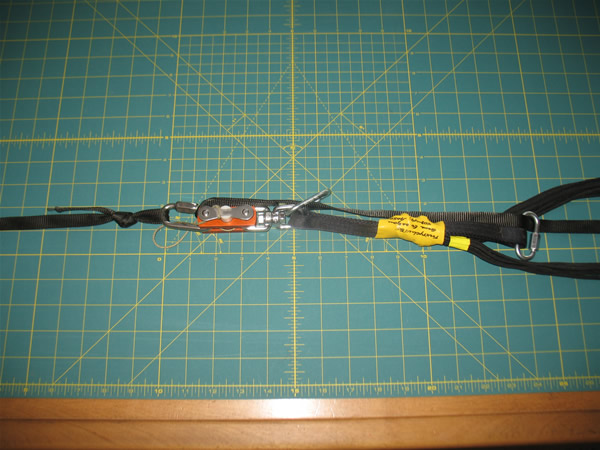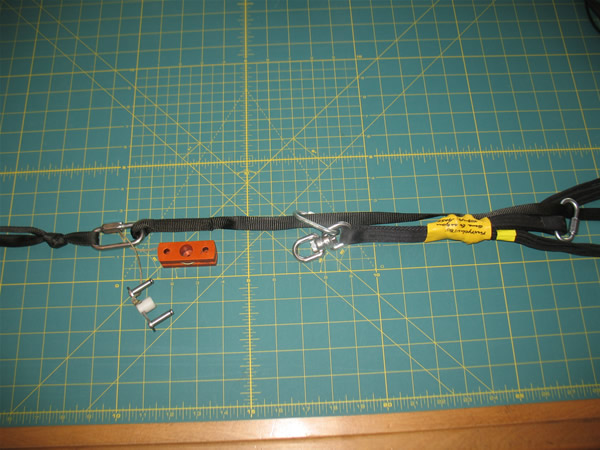eengelgau
Well-Known Member
- Joined
- Mar 8, 2009
- Messages
- 107
- Reaction score
- 0
Hi All, I've has this idea for awhile and now it's time to act. A common problem out west here is your rocket lands, the parachute fills with air and it's dragged for miles and miles. This can cause a lot of damage and even ruin your airframe and fins. My idea is really simple - to use the Tender Descender recovery tether in line with the chute and upon landing it separates. But the trickier issue is keeping the chute from then being blown away, or becoming a tangled mess.
The new Iris Ultra has a unique geometry that now makes this more practical. Normally for the Iris the center pull down strap mounts to the main bridal. To make this idea work the strap is separately mounted to the main shock cord QL. Now the main bridal with the shroud lines can separate, but the strap keeps the chute form blowing away since it's stays connected. Here are several pics of the prototype:

In this pic you see from left to right the shock cord, Tender Descender, Chute Bridal and then the shroud lines with the nylon strap in the center. Note that the strap separately runs down next to the bridal and ties off to the Shock Cord QL. The center pull also runs through a couple of extra QL's that act as guides for the bridal. This keeps the separated bridal from tangling.

This image show the assembly after separation. The bridal is now free to slide up the pull down collapsing the chute. The chute more or less turns itself inside out making it impossible to catch any air.
Upon recovery simply pull the bridal back down the strap, reconnect the QL's to the tether and your back where you were.
There are some challenges like running the wire up the inside of the shock cord, and stuff like that. I'll talk about that is future posts as I make these.
I plan to test this at Aeronaut at Black Rock in early August.
The new Iris Ultra has a unique geometry that now makes this more practical. Normally for the Iris the center pull down strap mounts to the main bridal. To make this idea work the strap is separately mounted to the main shock cord QL. Now the main bridal with the shroud lines can separate, but the strap keeps the chute form blowing away since it's stays connected. Here are several pics of the prototype:

In this pic you see from left to right the shock cord, Tender Descender, Chute Bridal and then the shroud lines with the nylon strap in the center. Note that the strap separately runs down next to the bridal and ties off to the Shock Cord QL. The center pull also runs through a couple of extra QL's that act as guides for the bridal. This keeps the separated bridal from tangling.

This image show the assembly after separation. The bridal is now free to slide up the pull down collapsing the chute. The chute more or less turns itself inside out making it impossible to catch any air.
Upon recovery simply pull the bridal back down the strap, reconnect the QL's to the tether and your back where you were.
There are some challenges like running the wire up the inside of the shock cord, and stuff like that. I'll talk about that is future posts as I make these.
I plan to test this at Aeronaut at Black Rock in early August.
Last edited:



